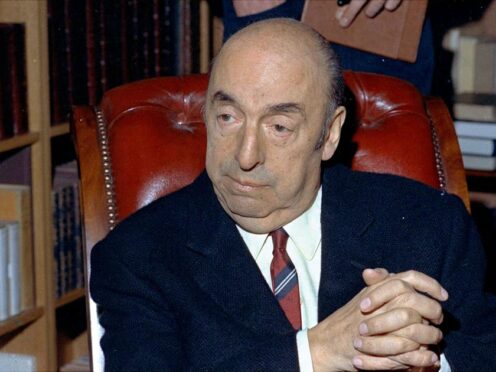
The death of Nobel laureate Pablo Neruda days after Chile’s 1973 military coup should be reinvestigated, an appeals court has ruled, saying new steps could help clarify what killed the poet.
Last December, a judge rejected a request by Mr Neruda’s nephew to reopen the case to look for causes other than cancer, which was listed on his death certificate.
The nephew, Rodolfo Reyes, said forensic experts from Canada, Denmark and Chile had found evidence pointing to Mr Neruda being poisoned.
Mr Reyes said forensic tests carried out in Danish and Canadian labs indicated Mr Neruda’s body contained “a great quantity of Cloristridium botulinum, which is incompatible with human life”.
The toxin can cause nervous system paralysis and death.
The ruling was the latest turn in one of the great debates of post-coup Chile.
The long-stated official position has been that Mr Neruda died of complications from prostate cancer, but his driver argued for decades that he was poisoned.
A judge ruled in December that the forensic results had already been carried out or were “late”, and didn’t lead anywhere.
Several years earlier, other international forensics experts had already rejected the official cause of death as cachexia, or weakness and wasting of the body due to chronic illness — in his case, cancer.
But at that time, they also said they had not determined what did kill Mr Neruda.
On Tuesday, the appeals court in Santiago unanimously revoked the judge’s resolution and ordered that the procedures requested by the nephew be carried out.
These steps include a calligraphic analysis of the death certificate, a meta-analysis of the test results carried out by foreign agencies, and subpoenas for statements from Chile’s documentation project as well as an expert on Clostridium botulinum.
Pablo Neruda was best known for his love poems and accumulated dozens of prizes, including the 1971 Nobel Prize for Literature.
He was also a Communist Party member and friend of Chile’s President Salvador Allende, whose government was toppled in the coup that put General Augusto Pinochet in power.
Mr Allende refused to surrender and took his own life.
Mr Neruda was traumatised by the military takeover and the persecution and killing of his friends.
He planned to go into exile in Mexico, where he would have been an influential voice against the dictatorship.
But a day before his planned departure, he was taken by ambulance to a clinic in Santiago, where he died September 23 1973.
Suspicions that the dictatorship had a hand in his death have remained long after Chile returned to democracy in 1990.
Mr Neruda’s body was exhumed in 2013 to determine the cause of his death, but those tests showed no toxic agents or poisons in his bones.
His family and driver had demanded further investigation.

Enjoy the convenience of having The Sunday Post delivered as a digital ePaper straight to your smartphone, tablet or computer.
Subscribe for only £5.49 a month and enjoy all the benefits of the printed paper as a digital replica.
Subscribe